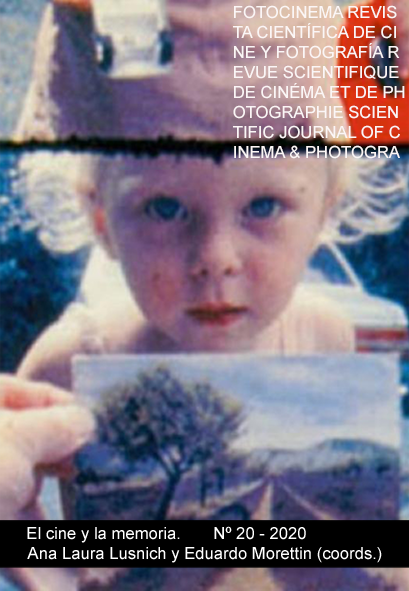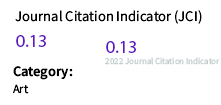The war cinema of World War II: the case of Dunkirk
DOI:
https://doi.org/10.24310/Fotocinema.2020.v0i20.7621Keywords:
War Film, II World War, Nolan, Film AnalysisAbstract
War cinema enjoys a certain revival in our years of European crisis. And especially that of the Second World War, which often tells the story of "good" combatants (the Allies), as opposed to "bad" combatants (Nazis). While there have been certain approaches to a more psychological and intimate view of the conflict, such as the classic The Sinking (Der Untergang, Eichinger, 2004), or the novel Cold War (Wojna, 2018) or The Captain (Der Hauptmann, Schwentke, 2017), it is no less true that Dunkerque (Dinkirk, Christopher Nolan, 2017) presents a series of radical differences with the previous films that, undoubtedly, contribute to rediscovering the conflict with a less epidermal look than the traditional one: This is a great blockbuster product, the film practically lacks dialogues (which connects it with the photographic narrative force) and, in addition, it has a subtle sound design where the fundamental thing is the sounds of war (diegetic resources). In addition, and as a novelty in the genre, the enemy is invisible because we do not have the slightest reference to it. His narration, finally, has many particularities that we will have the opportunity to analyze.
Downloads
Metrics
Publication Facts
Reviewer profiles N/A
Author statements
Indexed in
-
—
- Academic society
- N/A
- Publisher
- Universidad de Málaga
References
Blanco, M. (2019). Manual de tecnología para la comunicación audiovisual: de la cámara al drone. Salamanca: Comunicación Social.
Costa, J. (2016). Dunkerque. Fotogramas (15 de noviembre). Rescatado de: https://www.fotogramas.es/peliculas-criticas/a16956186/dunkerque/#critFG
Diamante, J. (2010). De la idea al film. Madrid: Cátedra
Doméncech, H. (2011). Robert Capa: instantáneas de una vida de película. En R. Esparza & N. Parejo (eds.), Solos ante la cámara. Biopics de fotógrafos y cineastas. (pp. 55-63). Barcelona: Luces de Gálibo.
Hueso, Á. L. (1991). Planteamientos historiográficos en el cine histórico, Film-Historia, Vol. I, No.1. pp. 13-24.
Koch, T. (2017). Dunkerque gusta mucho, pero también genera polémica. El País (13 de agosto) Recuperado de: https://elpais.com/cultura/2017/08/11/actualidad/1502450952_743895.html
Levine, J. (2011). Forgotten Voices of Dunkirk. Londres: Ebury Press.
Estévez, M. (2017). Christopher Nolan: ‘mi abuelo murió en Dunkerque, crecí con su historia’. ABC (21 de julio). Recuperado de: https://www.abc.es/play/cine/noticias/abci-christopher-nolan-abuelo-murio-dunkerque-creci-historia-201707210220_noticia.html
Parejo, N. (2016). La sombra del iceberg: un documental de investigación en primera persona sobre la fotografía el miliciano muerto de Capa. Signa. Revista de la Asociación Española de Semiótica, nº25, pp. 847-864.
Sales Lluch, J. M. (2003). La Segunda Guerra Mundial en el cine. Valladolid: Galland Books.
Sánchez-Escalonilla, A. (2017). Estrategias de guion cinematográfico. Madrid: Ariel.
Zunzunegui, S. (1989). Pensar la imagen. Madrid: Cátedra.
Zunzunegui, S. (2008). La mirada Plural. Madrid: Cátedra.
Zunzunegui, S. (2017). Entrevista en El País a propósito del estreno de Dunkerque. Rescatada en: https://elpais.com/cultura/2017/08/11/actualidad/1502450952_743895.html
Downloads
Published
How to Cite
Issue
Section
License
All contents published in Fotocinema Revista científica de cine y fotografía are protected under the Creative Commons Attribution-NonCommercial-ShareAlike 4.0 International (CC BY-NC-SA 4.0) license. All about this license is available in the following link: <http://creativecommons.org/licenses/by-nc-sa/4.0>
Users can copy, use, redistribute, share and exhibit publicly as long as:
- The original source and authorship of the material are cited (Journal, Publisher and URL of the work).
- It is not used for comercial purposes.
- The existence of the license and its especifications are mentioned.
There are two sets of authors’ rights: moral and property rights. Moral rights are perpetual prerogatives, unrenounceable, not-transferable, unalienable, imprescriptible and inembargable. According to authors’ rights legislation, Fotocinema. Revista científica de cine y fotografía recognizes and respects authors moral rights, as well as the ownership of property rights, which will be transferred to University of Malaga in open access. The property rights are referred to the benefits that are gained by the use or the dissemination of works. Fotocinema. Revista científica de cine y fotografía is published in an open access form and it is exclusively licenced by any means for doing or authorising distribution, dissemination, reproduction, , adaptation, translation or arrangement of works.
Authors are responsable for obtaining the necessary permission to use copyrighted images.














13.png)



